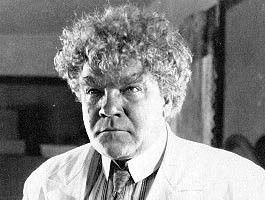










A few months ago I was at a party at John K's house, and, having had a few drinks, I was railing about how cartoonists were once important and influential contributors to culture, and not the hired "wrists" many of us have become today, grinding out corporate product for a few bucks. Thomas Nast was one of the names I held up as an example of how cartoonists once had integrity and could change society - Well it was obvious that none of the "younger" crowd, many of whom were students or graduates of expensive animation schools, had ever heard of Thomas Nast or had any idea what I was talking about. (could have had something to do with the alchohol)
Steve Worth suggested I write a blog about Nast. At the time I was really busy with work and with finishing my "Attila" movie, and there was no way I had the time to get into this "bloggging" stuff. Well, now my workload has eased off quite a lot, so I have more time to hang out of the internet and post stuff on a blog and read other people's blogs - So here is the promised piece on Thomas Nast
Nast is remembered today as the "Father of American Political Cartoonists". While still a teeenager in 1860 a New York newspaaper sent him to London to cover a prize-fight (In those days, pre-photography, newspapers hired artists to illustrate the news - America was a nation of immigrants, many of whom could not read, so this was a way to sell papers to illiterate "New Americans") He stayed on in Europe to follow Garibaldi's army and document the unification of Italy. Returning to America, he "covered" Lincoln's campaign for President, supporting the "abolitionist" Republican party against the "states' rights" Democrats. (Yes, the Democrats supported slavery! Times have changed!) Nast drew some great propaganda in favor of the Union during the Civil War. Abraham Lincoln said of him: "Thomas Nast has been our best recruiting sergeant. His emblematic cartoons have never failed to arouse enthusiasm and patriotism, and have always seemed to come just when these articles were getting scarce."
But Nast's most famous crusade was against Wiliam Marcy "Boss" Tweed and the Tammany Hall political machine in New York City after the war. Tweed ran a notoriously corrrupt ring of politicoes, controlling all the politics in New York state. Through the late 1860's, Nast did a famous series of cartoons, mercilessly exposing the corruption of the "Tweed Ring". Tweed tried to bribe Nast, offering $500,000 to drop the whole thing. (I can only imagine how much that would be in today's dollars!) Harper's championed their star cartoonist: "Believing that 'every man has his price' they have tried to buy him off. To their astonishment they found they were dealing with a man who was not for sale. Then they tried the efficacy of threats. Letters of the most violent character poured in upon him ... threatening violence and even death ... The pages of this paper show and will continue to show that threats are quite as impotent as bribes with Mr. Nast."
Nast kept up the deluge of cartoons, and the Tweed Ring was toppled from power in the elections of 1871. "Boss" Tweed fled the country to avoid arrest, but he was recognized as he was hiding out in Spain. Someone recognized him based on Nast's caricature!
Nast continued his career, creating the famous "Republican Elephant" and the "Democratic Donkey" as well as drawing the modern concept of Santa Clause (before Coca-Cola)
Just writing this story makes me feel like a complete wuss! The proud heritage of cartoonism has been laid so low! We cartoonists have sold our souls to faceless corporations for a few pennies - when it was our destiny to change the world!
Research for this post is from "Th. Nast, His Period and his Pictures" by Albert Bigelow Paine, 1971









 By popular demand (Well, one person asked for it---) Here is more early Milt Stein. This is from issue #11 of CooCoo comics from 1943. This is serious wartime propaganda, and you can see that Stein's style has really evolved into a wonderfully exuberant and expressive look. Still rooted in the "rubber hose" tradition, Stein creates dynamic compositions filled with depth of field, and a very cinematic approach to comics. Stein stopped drawing Supermouse shortly after this, and he did a ton of work for Timely comics (what would later become Marvel Comics) - working for editor Vince Fago (Stan Lee was in the army) In the '50s Stein returned to drawing Supermouse in his own book, with a more sophisticated style.
By popular demand (Well, one person asked for it---) Here is more early Milt Stein. This is from issue #11 of CooCoo comics from 1943. This is serious wartime propaganda, and you can see that Stein's style has really evolved into a wonderfully exuberant and expressive look. Still rooted in the "rubber hose" tradition, Stein creates dynamic compositions filled with depth of field, and a very cinematic approach to comics. Stein stopped drawing Supermouse shortly after this, and he did a ton of work for Timely comics (what would later become Marvel Comics) - working for editor Vince Fago (Stan Lee was in the army) In the '50s Stein returned to drawing Supermouse in his own book, with a more sophisticated style.









































